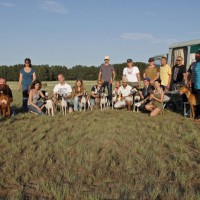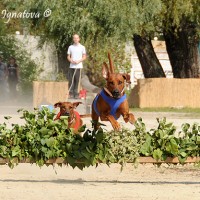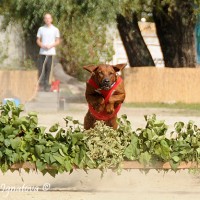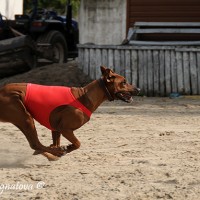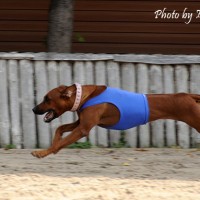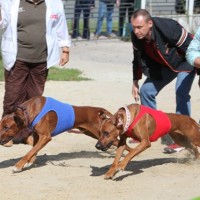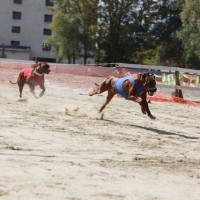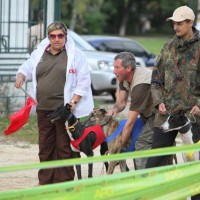Rhodesian Ridgebacks are participating in lure coursing competition in Ukraine, but not officially. But in some others countries, for example in Finland, they are running officially.
From Wikipedia :
In lure coursing, dogs chase an artificial lure across a field, following a pattern that is meant to simulate live coursing. A typical lure course in the United States is between 600 and 1,000 yards (550 and 910 m) long. In Europe, as well as the rest of the world, the course length can be over 1000 meters, and often incorporates some obstacles or jumps. The course must have a minimum number of turns in order to simulate prey (the jack-rabbit or hare) changing direction in a chase. The fields can be fenced or not. If a dog is lure focused they will typically follow the lure from start to finish and not run off course. Dogs with some considerable lure experience, termed «lure-wise», may try to anticipate or «cheat» by attempting to cut off the lure instead of trying to capture the lure using follow, speed and agility. Sighthounds generally have no need to be trained or enticed to chase the lure since the desire to chase is instinctual.
Some breeds do, however, require lure play at a very early age to encourage them to follow an artificial object with enthusiasm. Dogs must be at least one year old to compete; the hard fast turns are tough on a dog’s developing joints, and intense and frequent competitive lure coursing before the age of 12 months may cause joint problems later in life. Dogs at an earlier age do require a moderate but essential introduction to the artificial chase to: stimulate their normal mental and physical development, to prepare and improve their capacity to perform physically with enthusiasm without hurting themselves — as is the case with the mutual, voluntary athletic play of littermates.






